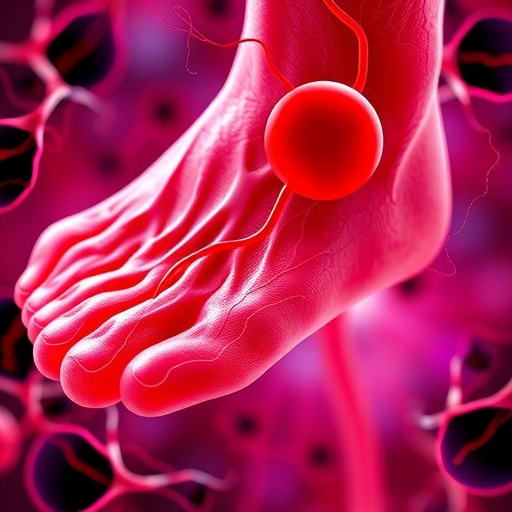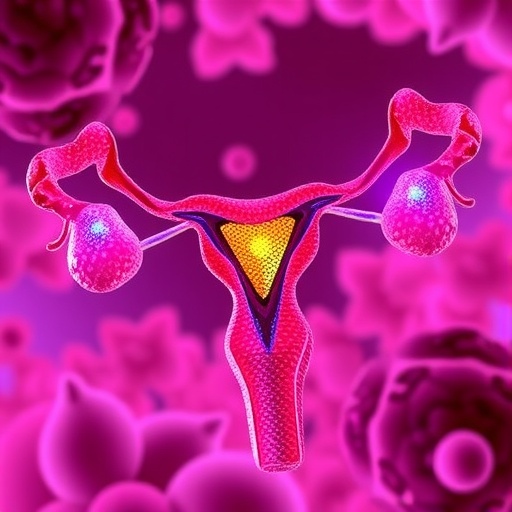In the realm of healthcare, particularly in home nursing, the complex interplay between care continuity, team autonomy, and the efficiency of resource planning systems is gaining increasing attention. A recent study led by Ruotsalainen, Väisänen, and Corneliusson et al. sheds light on how these factors contribute to the perceived time pressure experienced by home care nurses in Finland. This cross-sectional, multi-source study not only underscores the challenges faced by nursing professionals but also highlights the pivotal role that structured systems and team dynamics play in alleviating stressors in the caregiving environment.
The essence of care continuity cannot be understated. For home care nurses, maintaining a consistent, ongoing relationship with patients is paramount. It facilitates better health outcomes, enhances patient satisfaction, and fosters a trusting relationship. However, interruptions in care continuity can lead to confusion, errors, and ultimately, a decline in patient health. Nurses in the study reported feeling rushed and pressured when managing multiple patients, particularly when care transitions were poorly coordinated or planned. This sense of urgency can compromise the quality of care delivered.
Team autonomy emerges as another critical factor in the study. When nurses work within autonomous teams, they are often empowered to make decisions regarding patient care without excessive oversight. This autonomy is believed to enhance job satisfaction and allow nurses to tailor care to the unique needs of each patient. However, the balance of autonomy and responsibility is delicate. The study noticed that while autonomy can reduce perceived time pressure, it must be paired with effective communication and support from management to ensure that teams do not become isolated or overwhelmed.
Resource planning systems also play a vital role in shaping the experience of home care nurses. Efficient resource allocation, scheduling, and access to necessary materials can significantly influence the time a nurse spends on each case. The data gathered in this study pointed out that poorly implemented planning systems contributed to feelings of chaos and disorganization within home care settings. Nurses voiced concerns over last-minute changes and resource shortages that hindered their ability to provide seamless care. Thus, enhancing these systems is not merely an administrative task but a foundational component in improving nurses’ work experiences.
The findings of Ruotsalainen et al. highlight an urgent call for healthcare administrators and policy makers to rethink strategies surrounding home care delivery. As the population ages and the demand for home nursing grows, understanding and addressing the nuanced pressures faced by nurses is imperative. The implications go beyond just nurse satisfaction; they directly affect patient outcomes and healthcare costs.
One striking observation from the study was the key role of interdisciplinary collaboration in reducing time pressures. Home care often requires a multi-faceted approach, where different healthcare professionals contribute to a patient’s overall care strategy. When teams function cohesively, they can collectively strategize on patient needs and share the workload more effectively. In contrast, disjointed communication and lack of collaborative frameworks exacerbate time pressure and contribute to burnout among nurses.
Furthermore, the study indicates that training and professional development opportunities for nurses can mitigate some of the stressors related to time management. By equipping nurses with skills in effective communication, prioritization, and crisis management, they become better prepared to handle the dynamic and sometimes chaotic nature of home care deliveries. Investing in comprehensive training programs can yield significant dividends in job satisfaction and patient care quality.
Another aspect that must be considered is the psychological well-being of nurses. Prolonged time pressure and inadequate support systems can lead to higher rates of burnout, anxiety, and depression among caregiving professionals. The study points out correlations between perceived time pressure and mental health outcomes, emphasizing the importance of creating a supportive workplace culture. Organizations need to recognize that the mental health of their staff is integral to the overall success of the care provided.
In addition, leveraging technology can be a game changer for home care nurses. The implementation of advanced scheduling software, telehealth platforms, and mobile tools can streamline processes and improve efficiency. Many nurses have expressed optimism about the role of technology in alleviating their burdens, allowing them to focus more on direct patient interaction and less on administrative tasks. However, there is also a cautionary note regarding the potential for technology to become a double-edged sword if not thoughtfully integrated into practice.
The ongoing global shift towards patient-centered care aligns well with the findings of this study. Empowering patients and their families to take an active role in care decisions can relieve some of the pressure on nurses while enhancing patient engagement. Education and support for clients can lead to better self-management of health issues and improved communication, paving the way for more effective collaborations between patients and healthcare providers.
As this study reveals, addressing the perceived time pressure among home care nurses requires a multifaceted approach. Solutions must be comprehensive, addressing not only the systems in place but also the interpersonal dynamics within teams. Stakeholders must be proactive in creating environments conducive to nurse satisfaction and high-quality patient care.
Ultimately, this research contributes to a growing body of literature underscoring the need for systemic change within home care environments. The study serves as a wake-up call for healthcare leadership to invest time and resources into understanding the unsung heroes of the healthcare system—nurses. By supporting these professionals, we cultivate an environment where both nurses and patients thrive.
As we continue to explore the intricacies of home care nursing, the evidence brought forth by Ruotsalainen and colleagues can inform policies, initiate dialogue, and inspire initiatives aimed at optimizing healthcare delivery. By valuing the perspectives of nurses and prioritizing their working conditions, we can make meaningful strides towards a more sustainable and effective healthcare system.
Subject of Research: The impact of care continuity, team autonomy, and resource planning systems on perceived time pressure among home care nurses in Finland.
Article Title: Care continuity, team autonomy and resource planning systems in relation to perceived time pressure among Finnish home care nurses: a cross-sectional multi-source study.
Article References:
Ruotsalainen, S., Väisänen, V., Corneliusson, L. et al. Care continuity, team autonomy and resource planning systems in relation to perceived time pressure among Finnish home care nurses: a cross-sectional multi-source study. BMC Nurs 24, 1347 (2025). https://doi.org/10.1186/s12912-025-04028-2
Image Credits: AI Generated
DOI: 10.1186/s12912-025-04028-2
Keywords: care continuity, team autonomy, resource planning systems, perceived time pressure, home care nurses, Finland.
Tags: autonomy and decision-making in nursing teamscare transitions and their effectschallenges faced by Finnish home care nursesefficiency of resource planning systemsenhancing patient satisfaction in home careimpact of care continuity on patient outcomesimportance of structured systems in caregivingmanaging multiple patients in home carerelationship between nurses and patientsstress factors in nursing professionteam autonomy in healthcare settingstime pressure in home care nursing





